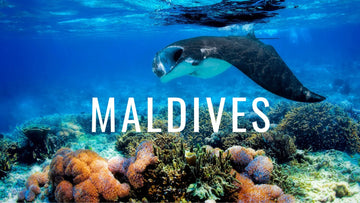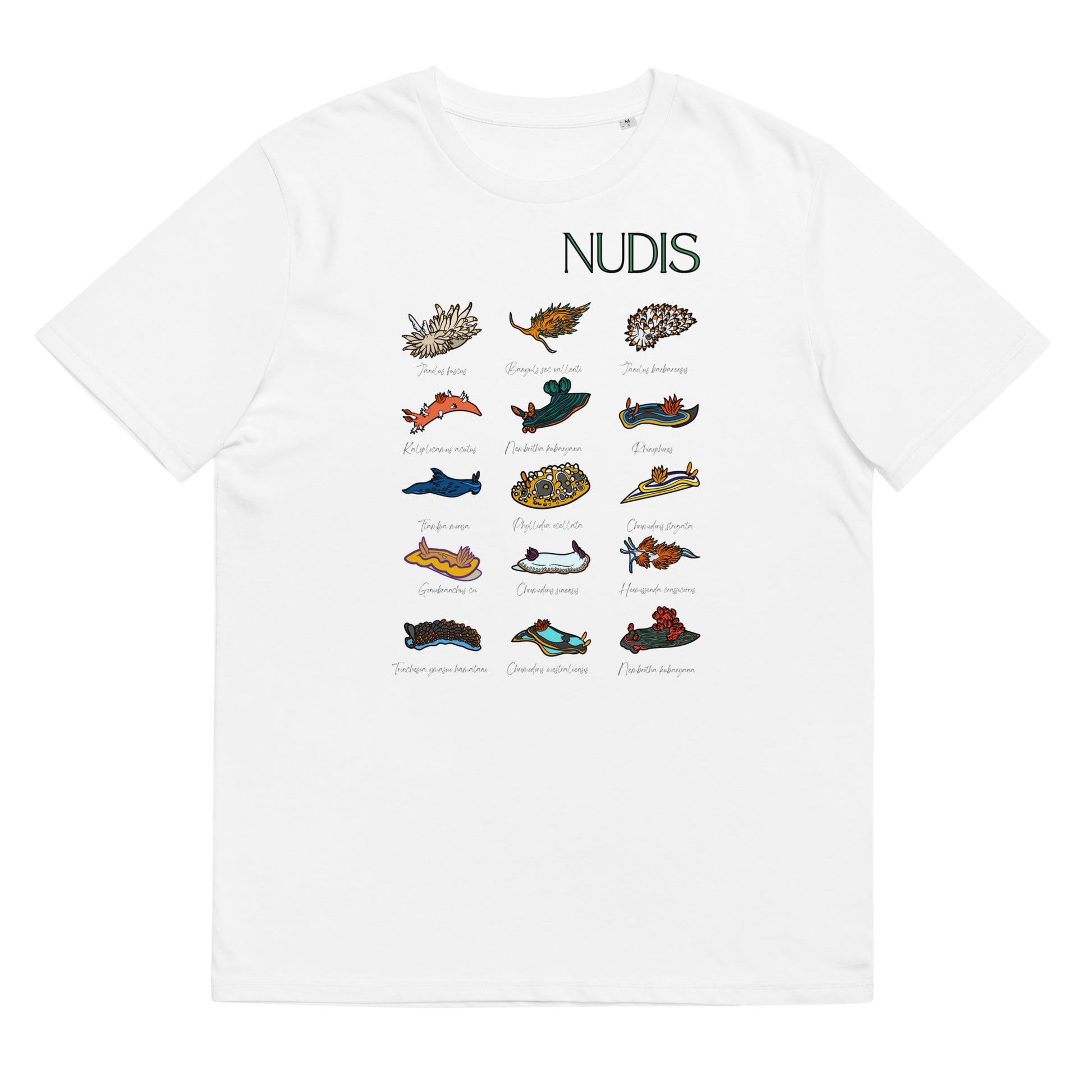Before you even set foot in the Maldives, you know it's going to be one of the scuba diving trips of a lifetime. From the plane, you see reefs stretching for miles under sparkling waters. Lose yourself in the blue. You can only imagine diving with manta rays, whale sharks, turtles and endless coral reefs. Your first dive trip to the Maldives will be unforgettable.
The sight of the whimsical shapes of the atolls and the countless shades of green and blue around the coral reefs will force you to see yourself underwater after so much planning. Being surrounded by the colorful reef species you are looking for will make you feel privileged.
The Maldives is a long chain of 26 atolls located near the southwestern tip of India. The country has more than 1,100 low-lying coral islands that rise from great depths of 4,000 meters in some places. Its location in the ocean, away from pollution and muddy estuaries, has provided a variety of wildlife, cleanliness and clarity of water that make the Maldives an unforgettable diving destination.

Maldives, whale sharks and manta rays sanctuary. Picture by spettacolopuro
T-shirts designed by divers for divers
VIEW MORE T-SHIRTS FOR DIVERS
More than 1,000 species of fish and invertebrates occupy these waters that constantly receive nutrients and ocean currents that favor the explosion of marine life. Majestic grey sharks, its famous manta rays and cleaning stations, whale shark sanctuaries, huge schools of barracuda, infinite whip corals or huge schools of hammerhead sharks able to subtract the background light... Maldives is a natural aquarium where even the sharks are friendly.
Malé is the capital and only major city of the Maldives, which has only 300,000 inhabitants and for them the Indian Ocean is everything. Scuba diving in the area is done both from shore and through liveaboads in Maldives that cross the main atolls and bring you closer to the thilas (large underwater columns that rise from the bottom and reach a few meters of the surface) to enjoy reefs where both the variety and quantity of colorful underwater are the tonic.

Maldives consists of over 1,000 coral islands full of life. Image of Easa Shamih
The shallow lagoons provide shelter to small and delicate corals and colorful reef fish that receive food from the fertile waters that are loaded through various channels. In these channels you'll find some of the best dive sites in the Maldives and where you can see manta rays in their cleaning stations, gray sharks, hammerhead sharks, white tip sharks and or eagle rays. The best way to visit this paradise lost in the big blue is a through its main atolls.
Book Your Dive Trip to the Maldives at the Best Price
SEE ALL DIVING OFFERS IN THE MALDIVES
Ari Atoll
Ari Atoll is not noted for its splendor coral, but has healthy and marine-life crowded reefs. Its attractiveness lies in the large pelagic life, especially the whale sharks and hammerhead sharks, and you can also find gray sharks, white tip sharks and manta rays to dive with in high visibility waters.

Manta rays are one of the main attractions of scuba diving in the Maldives. Image by nicoboxethai
One of the best Thilas in the Maldives is Kudarah Thila. It is located in a channel between the islands of Dhigurah and Dangethi. This is a small enough thila that you can explore it in a single dive and diverse enough to give you an idea of what Maldivian reefs are like. This thila is covered by a beautiful coral garden with schools of blue lined snappers and a great variety of anemones inhabited by different species of clownfish. This thila is also occasionally visited by grey sharks and white tip sharks and it is common to see honeycomb moray eels or beautiful fire dart gobies.
You can also find a very interesting shipwreck in the area, the "Halaveli" wreck, a 33 meter cargo ship that was sunk in 1990 to create an artificial reef in the northeast of Ari Atoll. This wreck is known for its population of marbled sting rays that live around the wreck, groups of batfish or lots of moray eels that have occupied every free space. The boat is covered with hard and soft corals, sponges and large gorgonians.
"Fish Head" is one of the most popular sites in the Maldives for shark diving. In a lush garden of corals (including black coral from 30 meters) we can dive with large gray sharks swimming at a blistering pace in the big blue, beautiful schools of fusiliers, batfish, napoleon wrasse and large groups of eagle rays flying over the thila. There are plenty of colorful clown triggerfish, sweet lips, Moorish idols, sea turtles and huge colorful nudibranchs.
Fish Head, Ari Atoll, Maldives
To dive with hammerhead sharks we recommend you to try «Hammerhead Point». This site is located northeast of Ari atoll and its name says it all. Many of the most stunning images of large schools of hammerhead sharks have been taken in this area. Although there are strong currents, it is worth noting the amazing backlights of dozens of hammerhead sharks flying over your head.
North Male Atoll
The North Male Atoll is the most popular and explored diving spot in the Maldives. The diving here is very diverse and is characterized by its healthy reefs, the best in the country, where you’ll share the space with mantas in the cleaning stations or with reef sharks. Through liveaboards is undoubtedly the best way to dive around North Male.

Diving with reef sharks is one of the attractions of the North Male Atoll. Pic by uwphotographyguide
The manta cleaning station of «Manta Point» is one of the most interesting points of this atoll. It offers the amazing experience of watching the leisurely flight of manta rays while they are cleaned by wrasses. Sometimes without realizing it, you may find yourself surrounded by up to 10 of these extraordinary animals. In this reef there are also interesting residents like octopus, moray eels and white tip sharks, but unable to overshadow the manta rays.
In North Male there is another really interesting thila: «Girifushi Thila». This column is covered with a beautiful and colorful coral garden with both soft and hard coral where schools of jackfish shelter from currents. Groupers, boxfish, or lionfish pose for the cameras of photographers who can also admire the schools of huge barracudas, reef sharks patrolling the area or the ever-present groups of eagle rays.
Mugs for Ocean Lovers
SEE MORE MUGS FOR DIVERS
One of the first dive sites discovered in the Maldives was «Banana Reef» and still remains one of the most beloved. Its name comes from the shape of the reef, long and curved like a banana, and noted for the high quality of its coral, exceptionally healthy, and its clean water of great visibility. The walls, full of sponges and acropora, are filled with large groupers, snappers, angelfish, moray eels and lobsters.
Manta Point, unique underwater show
Baa Atoll
Baa is a circular atoll around 30 km wide located northwest of North Male. This atoll has 50 islands lapped by crystal clear waters where reside from small colorful reef species to the two large pelagics that attract thousands of divers every year to Maldives: whale sharks and manta rays. In fact this atoll has great importance as a protected area for whale sharks. There are records of 110 of these individuals resident in the area, who are particularly interested in «Hanifaru Bay» breeding area of these sharks, which come here to feed on the plankton that arises during the southwest monsoon.
In addition to Hanifaru Bay, manta rays can be seen in «Dhonfanu Thila». The current of this thila attracts manta rays and these to divers. But until you get to the station and wait for the mantas, you will be delighted by the vivid colors of the corals, gorgonians and sponges that decorate the thila, home of snappers, wrasses, butterfly fish, parrot fish, angel fish or unicorn fish, between many other reef fish. Another interesting point is «Dhigali Haa», a submerged pinnacle whose summit rises to 7 meters of the surface. At this point, where there are many whip corals or anemones that serve as home to porcelain crabs, you’ll dive surrounded by fusiliers and carangids. This area holds a very special creature, the Coriocella hybyae, a black nudibranch-like sponge and endemic to the Maldives.
South Male Atoll
South Malé has 6 channels that provide food laden streams that assure life in the reef: huge schools of different tropical fish, large pelagic and profusion of soft and hard corals live thank to this rich currents. It also has numerous caves and walls to practice different diving than its neighbor North Male, where enjoy strong currents in a colorful environment.
These flows determine the type of diving that takes place in this atoll and in areas like «Cocoa Thila» diving is impossible with strong currents, but with moderate stream lets you dive into one of the best places in Maldives. This 400 meters long 30 meters deep thila will give you the opportunity to spot schools of tuna or groups of majestic eagle rays. Among the overhangs and caves of this thila are large schools of sweetlips and fusiliers and no shortage of gray sharks, very common in this atoll. «Guraidhoo» has become an essential diving point for professional photographers, who will find at this point the most beautiful orography and unparalleled profusion of life throughout the country. It has 2 channels and a central reef with a frenetic life. Napoleon wrasses, gray sharks, honeycomb moray eels or squirrel fish live together in a stunning display of corals of all types and sizes.
Kuda Giri Wreck
The «Kuda Giri» is a small wreck located between 15 and 30 meters deep, suitable also for less experienced divers as it is situated in an area of little currents. You can go across the inside of the wreck and is colonized by orange yellow and red sponges, who welcome schools of glassfish or batfish, gobies, frogfish, marine turtles and napoleon wrasse. It is also interesting to dive around the wreck, with garden eels, nudibranchs and, if you are lucky, you’ll see a guitar shark living in the sandy bottom. Finishing with South Male, we should highlight «Medhu Faru», a coral wall motley complex with long gorgonians and whip corals that stretch for food that flows approach. The wall is home of multicolored sweet lips, unicorn fish, emperor angelfish, butterfly fish and blue ribbon eels. The sandy bottom is also very interesting, full of very busy spotted rays.



























